Red Sable Versus Synthetic Brushes for Oil Painting
By Symi Jackson in Art Tutorials> Painting Tutorials
Editor's Note: We sent an email to Rosemary & Co asking if they had any tips for oil painters choosing brushes. Here is their reply, edited slightly for use on EmptyEasel:
We get asked all of the time for the "magic" brush. Though, sadly, there is no such thing, there are certainly plenty of options available. And while it's difficult to recommend a brush to someone without knowing specifically what they are painting, here are some helpful guidelines I can share:
Quick announcement - EmptyEasel has created a quicker, easier way for artists to have their own art website. Click here to learn more and get a simple art website of your own!
1. Decide what you need the brush to do
This may sounds obvious, but very few people are able to use the same brush for their entire work. If you know that you need a brush for blending or softening your edges, as an example, that's a start.
(Below I'll try and break down some of the different types of oil brushes that Rosemary & Co carries, and what you should expect when using them.)
2. Choose your preferred brush length
Which handle length suits you best?
Our shorter handles (also known as standard handles) are approximately 7 inches. The longer handles are approximately 11 inches, and as a general rule favoured by oil artists as they allow perspective. If you're really daring, we do offer a 24 inch handle which is a technique old some masters such as Sorolla adopted.
You might try out a few lengths and see which you like better.
3. Buy the best paintbrush you can afford
I can't tell you how much you will appreciate a good brush, once you get hold of one. You must remember that your brush should be an extension of your arm; the last thing you need is for the brush not to behave how you intended.
4. Clean your brushes well
There's a lot of advice out there on cleaning your paint brushes, so for now, all I will say is make sure you do clean them well. It seems such a shame, and a waste of hard earned money, to have beautiful brushes and be hindered by the fact they're not cleaned properly—which makes them wear out much sooner.
Now, let's break down a few different types of brushes. . .
Synthetic oil brushes
Synthetic fibres have come on leaps and bounds over the last 10 years, like many other man-made products. They do not hold the taboo they once had. If you haven't dared try synthetics in the past because you thought they were "student" grade, I urge you to reconsider. They're all fairly easy to clean, withstand a good amount of abuse, and they are inexpensive.
Our own synthetic oil brushes include the following:
Ivory Synthetics
These are our most popular synthetic brushes for oils. They come in lots of shapes and sizes, and are available on both shorter and longer handles.
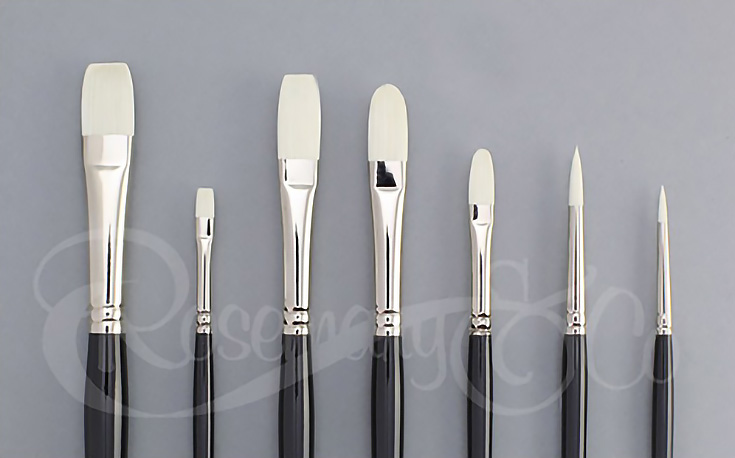
The Ivory fibres have been sandblasted with shards of glass, which makes them firm and allows them to wear down well. They clean really easily, and last a lot longer than your average synthetics would.
They'll be a good work horse for you, and many artists all over the world consider these their go-to brushes.
Eclipse Synthetics
The Eclipse Synthetics is a synthetic mongoose, which is designed to mimic the real thing, but with a little more spring. They are softer than the Ivories, above.

This line is ideal for blending and softening work, and are particularly favoured amongst portrait artists. The Eclipse fibres have been dyed four times to look like the mongoose, and the dye does make them feel different (softer) than the other synthetics available.
Shiraz Synthetics
This range has an excellent "snap" and "spring" to them, with paramount resilience and durability. They are extremely versatile which makes them ideal for use with any medium, specifically oil and watercolour.
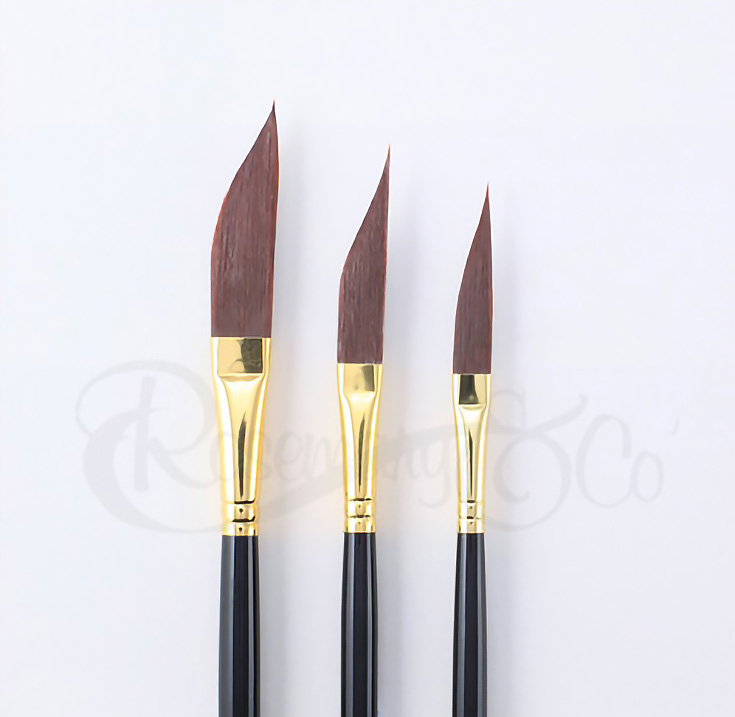
Like all synthetics, they're easy to clean, and hold their shape well.
Natural hair brushes for oil painting
As a general rule, natural hair brushes are more expensive than the synthetic brushes. They are also usually softer, and the hair will wear down more quickly. However, some of the marks you can gain from a natural hair brush simply can't be achieved with a synthetic brush, which makes them so popular among oil painters.
Here are some of the natural hair brushes we carry:
Masters Choice
The Masters Choice brushes are our most popular natural hair brushes. They are a unique blend of badger hair and are absolutely brilliant for alla prima work, allowing you to work "wet" on "wet" without pulling the paint away—making them ideal for adding highlights and tonal values.
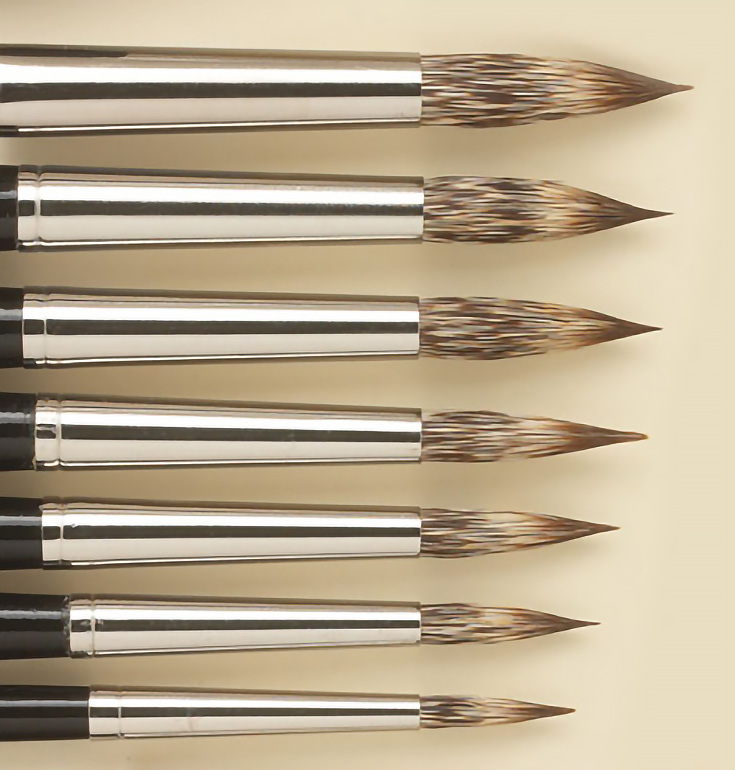
The hair is responsive and firm, yet gives almost a velvet feel when painting.
Pure Red Sable
The Pure Red Sable are a treat for oil painters, and are a brilliant choice when flexibility is needed. You can get quite precise with the Red Sable, yet they're also good blocking-in brushes, particularly in the larger sizes.
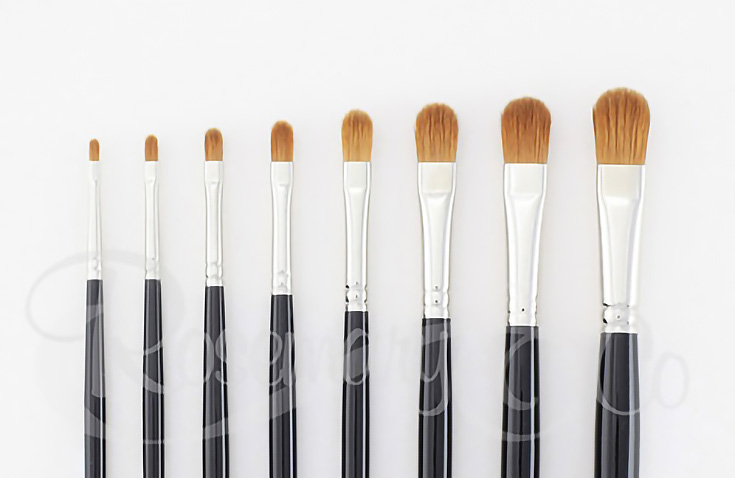
If you can afford to try the Sables, I guarantee you will not be disappointed.
Ebony
The Ebony range is a blend of natural hairs, which closely mimic the Sable, just at a lower cost. They are a little unsung gem. Literally everyone I speak to who has tried these always asks why they are not more popular, and I think the reason for that is because we only offer them in a couple of shapes. (We may work on other shapes if enough people ask for them.)
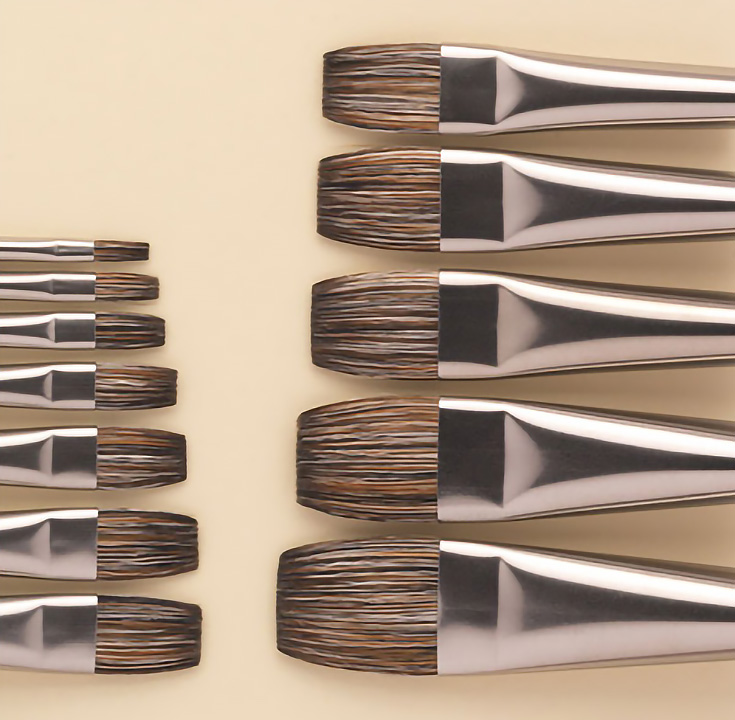
This range is strong enough to work with oil, but has a good softness for blending.
Ultimate Bristle
We offer lots of different bristle brushes, however the Ultimate range is our newest addition. This is a traditional bristle brush, with an upgrade: we take two equal amounts of the best quality Chinese bristle and place them opposite each other so that the natural curve is facing inwards. The bristle is selected in length and size to enable perfect balance.
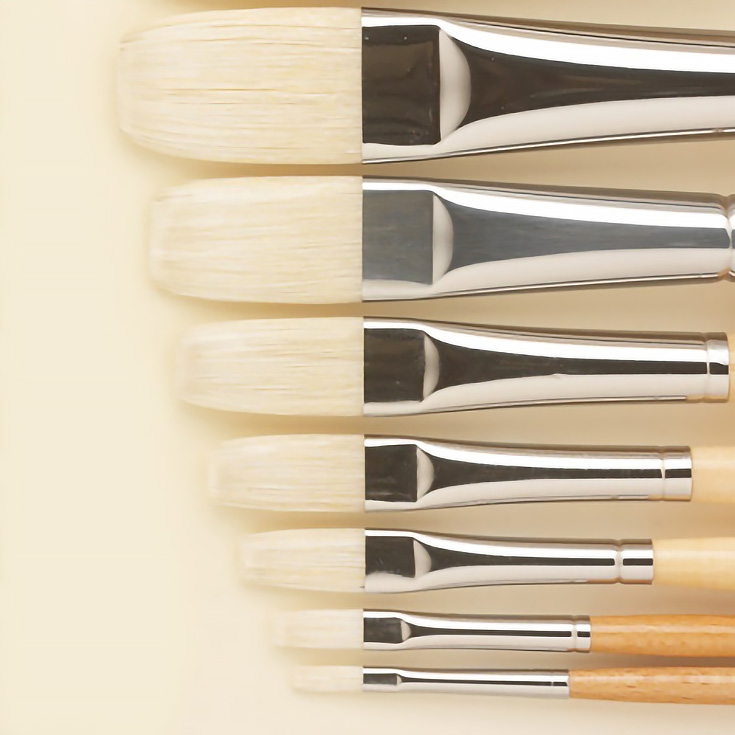
Although labour-intensive to make, the end result is a hard wearing brush which keeps its shape for a very long time. These brushes are currently only available on long (11 inch) handles.
I hope this has been insightful to break a few of our ranges down. . . there are lots more I could have talked about, but I think the ones I mentioned above are really key for getting an idea of the different types of brushes available.
If you ever need some more help or advice on choosing a brush, know that we are a small company, and we are real people. I'm always there to try and answer any questions you may have about brushes.
We also offer a free mail order catalogue, which shows all of our brushes photographed and printed at actual size. That's really useful since there's no universal brush size across different companies, sadly. There's also heaps of information in there should you wish to know more.
Special thanks to Symi Jackson from Rosemary & Co for her detailed answer to our question about their oil brushes, as well as allowing us to publish it here on EE.
GET EMPTYEASEL IN YOUR INBOX
We'll send you articles & tutorials right as we publish them, so you never miss a post! Unsubscribe here at any time.

NOTE: You may also be interested in EE's step-by-step drawing guide for artists. Click below to learn more!
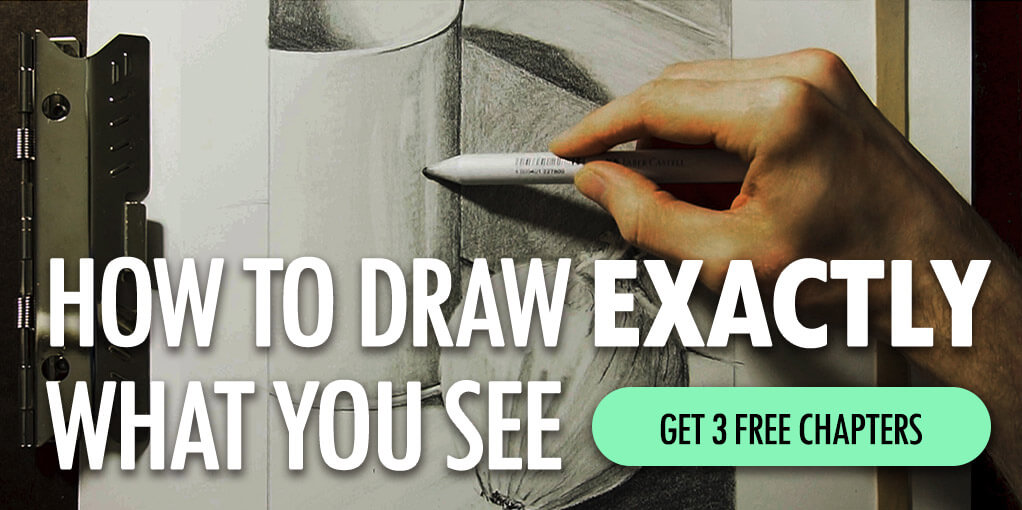
This post may contain affiliate links.
Red Sable Versus Synthetic Brushes for Oil Painting
Source: https://emptyeasel.com/2016/06/15/choosing-oil-paintbrushes-a-brush-makers-top-tips-for-artists/
0 Response to "Red Sable Versus Synthetic Brushes for Oil Painting"
Post a Comment